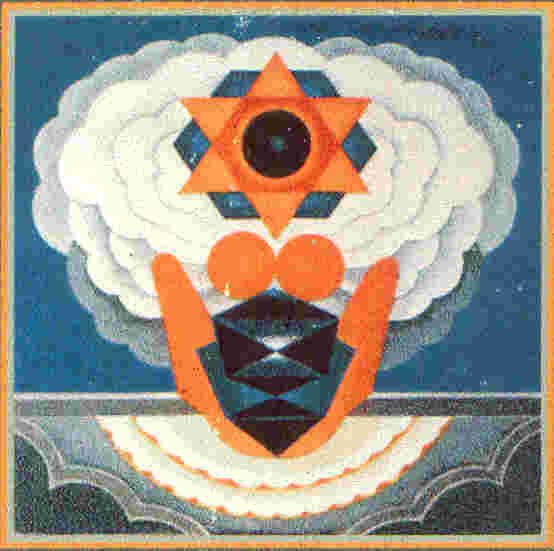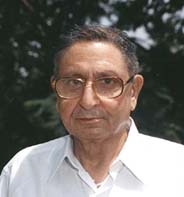|

|

|
|
Kashmiri Pandits' Association, Mumbai, India |

|
| | Home | August-September 2003 Issue | |
|
National Schools of Kashmir …
J.N.Kachroo An
Institution with Mission Introduction:
A
Conversion: In the
twenties of the last century, the catholic missionaries had a small
convent, a small dispensary, a school named St. Joseph’s High School at
Baramulla (they are still there), ostensibly their activities were
humanitarian. But an incident of conversion revealed their true intention.
These service outlets were perceived to be centers of mass contact to
further their ulterior objectives.
One day in the summer of 1925, a young Kashmiri Pandit, (a cousin
of my father), who was working as a teacher in St. Joseph’s High School
went missing. Frantic enquiries about his whereabouts were made, but to no
avail. The school authorities denied any knowledge. Soon it was discovered
that a young lady, seen in the dispensary the previous day was also
missing. The story was complete. Pandit Dinanath, a handsome youth had
been converted to Christianity, married to a beautiful lady, Josephine by
name and the couple surreptitiously smuggled out of the town in the wee
hours of the summer day. Reaction:
The orthodox sections of the society, still mostly illiterate and ignorant
were shocked. As if awake from a slumber, the people reacted sharply. The
local Sanatan Dharam Sabha (S.D. Sabha), the only representative
organisation of the sorts, passed a resolution condemning the incident,
naming the missionaries as the agents of a colonial power. The Arya Samaj
Sabha, Lahore, echoed its sentiments. The incident was reported in a
section of Urdu Press at Lahore. The people responded to the call by the
S.D. Sabha and observed a hartal. Some students of St. Joseph's High
School boycotted their classes. This kind of protest is generally believed
to be the first of it’s kind in Baramulla. Repression:
The British Resident at Srinagar smelt a rat. Had the Gandhian influence
that was so visible in the neighboring Punjab in twenties, triggered the
protest? Would this protest not spill over the borders into the Punjab? To
nip the movement in the bud, the Resident motored into Baramulla and
advised the administration i.e. the Wazir Wazarat (Present D.C.) to be
tough. The district authorities obliged him, arrested the office bearers
of S.D.Sabha and forced the shopkeepers to open their shops. The
protesting students returned to their classes.
The authorities of the St. Joseph’s School accused most of the
Hindu teachers of instigating the students to go on strike. The group as a
whole, about 8 to 10 in number, resigned or were coerced to resign. Resentment:
A wave of resentment
and anger swept across the town. People, irrespective of caste, creed or
religion rallied round the sacked teachers. They formed a group hereafter
called the Core Group (C.G.), and organised their activities, first under
the banner of S.D. Sabha, but later, with the support of all the sections
of the population. Their activities chiefly centered round indoor meetings
to garner more and more public support and collect the views of the more
influential sections of the people. There were few meetings of eminent
citizens. As per certain records of the S.D. Sabha, the unanimous opinion
was that there was need of weaning the young from pernicious influence of
the sweet tongued “Padrees” in white robes. The solution lay in having
a full fledged school which could break the monopoly of the missionary
school. Situation
Eased: in September
1925 Maharaja Pratap Singh died. The state was plunged in grief. The
attention of the administration was diverted. Normal activities came to a
halt. Raja Hari Singh had to succeed Pratap Singh. The would-be-ruler was
considered to be liberal and more assertive than his predecessor. The
members of the C.G. carried their activities more openly. The
administration relented. Preparation:
Winter of 1925-26 was fruitfully utilized for making a blueprint of an
educational institution. The C.G. was actively helped and guided by
certain officers and officials, albeit covertly. Pandit Tota Koul, father
of the well known diplomat T.N. Koul and Shivnath Koul, a conservator of
forest, were the moving spirits behind the scene. Some respectable
persons, including two lawyers, G.R. Raina and Sri Kanth Koul Vakil, son
of legendary Saligram Koul, supported the C.G. overtly. The scenario that
unfolded itself in April confirmed the success of their efforts. Royal
Permission: Raj Tilak
of Maharaja Hari Singh was celebrated in March 1926. He announced his
liberal educational policy. Taking an advantage of the situation, a
petition for according permission to open a school at Baramulla and naming
it in honour of the Maharaja was submitted immediately after his
coronation. Within a week of his coronation, the new ruler was pleased to
accord his royal assent to the request. Managing
Committee (M.C.): A
temporary managing committee (M.C.) with Kh. Qadir Joo Kokru, Ziladar and
landlord as President, Sardar Man Singh, an eminent landlord as VP and G.R.
Raina as Secretary was formed. All the members of the C.G. were co-opted
as members. Gobind Koul, an ex-headmaster of St. Joseph’s School, in its
early stages, was named the Headmaster and all the members of the C.G.
joined as teachers. A little later, three graduates and an undergraduate
joined the C.G. All volunteered to work on honorary basis till funds
became available. Birth
Of A School: A
full-fledged high school, christened as 'Sri Hari Singh National School,
Baramulla' was launched on the auspicious day of 14th
April 1926. The inaugural function was largely attended. Donations on spot
took care of certain initial expenses. The President M.C., kept two
spaceous buildings, at the disposal of the school to start with. Taking a
cue from the message of Pt. Tota Koul, praising the spirit of service and
sacrifice of the concerned, the school adopted “Service and Sacrifice”
as its motto and lived up to it. Uniqueness:
In 1925, Kashmir valley had four schools in Srinagar, besides St.
Joseph’s School at Baramulla. Two of them were in government sector,
while the other two CMS school and Islamia School in private sector. They
were founded and managed by C.M. Society, London and
Anjuman-I-Nusrat-ul-Islam respectively. But National School was the first
ever non-denominational and non-proprietary educational institution. It
was founded and managed by a M.C. comprising the workers (initially the
C.G., steadily replaced by elected members) and eminent citizens, with
executive powers in the hands of independent non-teaching members. This
novel arrangement remains unparalleled and unchanged. This unique
experiment has withstood the challenges of times. Development
1926-1938: The period
between 1926 to 1938 registered its all round development. On state gifted
land, the school built a beautiful complex comprising three buildings, two
hockey fields, a football ground and an agricultural farm. Feeder schools
in the town, in Uri and Magam Tehsils and a hostel were also started.
Almost all the junior teachers obtained teaching diplomas, while three
graduates got their degrees in teaching. Results at the matriculation
examination posed a challenge to its rival in the town. Its popularity
became quotable. Its fame travelled beyond the district, the present
Baramulla and Kupwara. Srinagar
School Opened: Banking
on its reputation and also on government’s support, the M.C. opened a
branch (full-fledged high school) at Srinagar in April 1938. D.N. Raina
B.Sc. B.T. headed the school. J.N.Misri B.Sc. B.T. was appointed as
Headmaster of Baramulla high school while S.L. Raina B.A. B.T. was
designated as the Principal to look after the two high schools and all
feeders etc. Pt. Balakak Dhar, Rais, landlord and Wazir Wazarat (D.C.) was
the president M.C. Loss
Of Baramulla School: The
government under the so called policy of 'Nationalisation of Private
Schools' took over the Baramulla school, and its assets, moveable and
immoveable, along with 25 qualified teachers on staff of both the schools
in 1949-50. The M.C. was left to manage only the Srinagar School,
registered afresh as National School, Srinagar. Present
Turmoil: The school
survived many a storm in its journey, the present upheaval since 1990
being the worst. It was steered through this crisis by late S.K. Koul, as
President M.C. till his death in 1998. Sh. Makhan Lal Dhar, a businessman
and a neighbour succeeded him as president. G.M Rather associated with the
school since 1984 has been the secretary of the M.C. Bashir Ahmed who
joined the school service in late sixties bore the brunt of heading the
school during the worst phase of the turmoil. Presently he functions as
the administrator while Mtr. Hafiza M.A. B.Ed., an appointee of seventies,
is the principal.
The list of names of those who brought honour to themselves and
fame to the school(s) is too long. They include leaders in all walks of
life. Finally the Core Group (C.G.) consisted of A.N. Kuchroo, B.D. Koul,
S.N. Pandita, D.N. Kokru, A.N. Bhat, N.L. Chalta, K.R. Bamoo, later joined
by S.L. Raina, J.N. Misri, D.N. Raina and S.N. Raina. Kh. Qadir Joo Kokru
resigned as president on health grounds, giving charge to S. Man Singh. Pt.
Gobind Koul acted as headmaster for a couple of months only and was
replaced by S.L. Raina.
|
|
|
JOIN US |
|
|


 National
School, Srinagar, an off-shot of its mother institution at Baramulla
has been rendering valuable service to the community for the last 65
years. This write-up is an attempt to put on record the events leading to
the birth of a school, its uniqueness, subsequent developments and
survival of its branch at Srinagar.
National
School, Srinagar, an off-shot of its mother institution at Baramulla
has been rendering valuable service to the community for the last 65
years. This write-up is an attempt to put on record the events leading to
the birth of a school, its uniqueness, subsequent developments and
survival of its branch at Srinagar.

